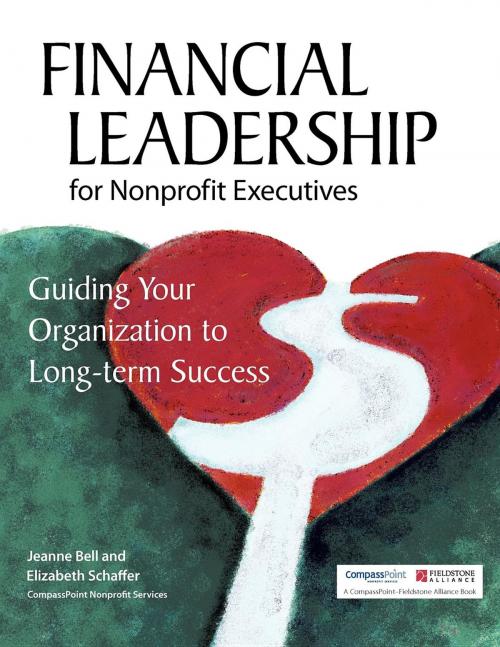Financial Leadership for Nonprofit Executives
Guiding Your Organization to Long-Term Success
Business & Finance, Finance & Investing, Corporate Finance, Industries & Professions, Nonprofit Organizations & Charities| Author: | Elizabeth Schaffer, Jeanne Bell | ISBN: | 9781618589118 |
| Publisher: | Turner Publishing Company | Publication: | March 31, 2005 |
| Imprint: | Fieldstone Alliance | Language: | English |
| Author: | Elizabeth Schaffer, Jeanne Bell |
| ISBN: | 9781618589118 |
| Publisher: | Turner Publishing Company |
| Publication: | March 31, 2005 |
| Imprint: | Fieldstone Alliance |
| Language: | English |
Making sure that your nonprofit is going to be around long-term requires financial leadership. This means creating a financial vision for your organization and planning how you’ll get there. Financial Leadership for Nonprofit Executives gives you the framework, specific language, and processes to lead with confidence. With it, you’ll learn how to protect and grow the assets of your organization and accomplish as much mission as possible with those resources. The good news is you don’t have to be a trained accountant, earn an MBA, or have run a for-profit business in another lifetime. You already have many of the skills it takes to be a financial leader. This useful guide makes the process understandable and doable. You’ll find clear, logical steps to learn how to get accurate financial data-in a format you can understand; use financial data to evaluate your organization’s health; plan around a set of meaningful financial goals; and communicate progress on these goals to your staff, board, and external stakeholders. You’ll also find five foundational financial leadership principles; three overarching questions every financial leader needs to be able to answer (and where to find those answers); two fundamental budgeting principles; and five steps to building a strong annual budget. At the end of each chapter is an evaluation tool. You can rate how your organization is doing relative to the component of financial leadership covered in each chapter. Each attribute is scored as being red, yellow, or green. Red” items are below standard and require immediate attention; yellow” items are widely practiced though not generally ideal; and green” items are considered best practice. Over time, as you and your partners on the board and staff move the organization toward green” in each of these areas, you will create an environment in which financial leadership can flourish.
Making sure that your nonprofit is going to be around long-term requires financial leadership. This means creating a financial vision for your organization and planning how you’ll get there. Financial Leadership for Nonprofit Executives gives you the framework, specific language, and processes to lead with confidence. With it, you’ll learn how to protect and grow the assets of your organization and accomplish as much mission as possible with those resources. The good news is you don’t have to be a trained accountant, earn an MBA, or have run a for-profit business in another lifetime. You already have many of the skills it takes to be a financial leader. This useful guide makes the process understandable and doable. You’ll find clear, logical steps to learn how to get accurate financial data-in a format you can understand; use financial data to evaluate your organization’s health; plan around a set of meaningful financial goals; and communicate progress on these goals to your staff, board, and external stakeholders. You’ll also find five foundational financial leadership principles; three overarching questions every financial leader needs to be able to answer (and where to find those answers); two fundamental budgeting principles; and five steps to building a strong annual budget. At the end of each chapter is an evaluation tool. You can rate how your organization is doing relative to the component of financial leadership covered in each chapter. Each attribute is scored as being red, yellow, or green. Red” items are below standard and require immediate attention; yellow” items are widely practiced though not generally ideal; and green” items are considered best practice. Over time, as you and your partners on the board and staff move the organization toward green” in each of these areas, you will create an environment in which financial leadership can flourish.















